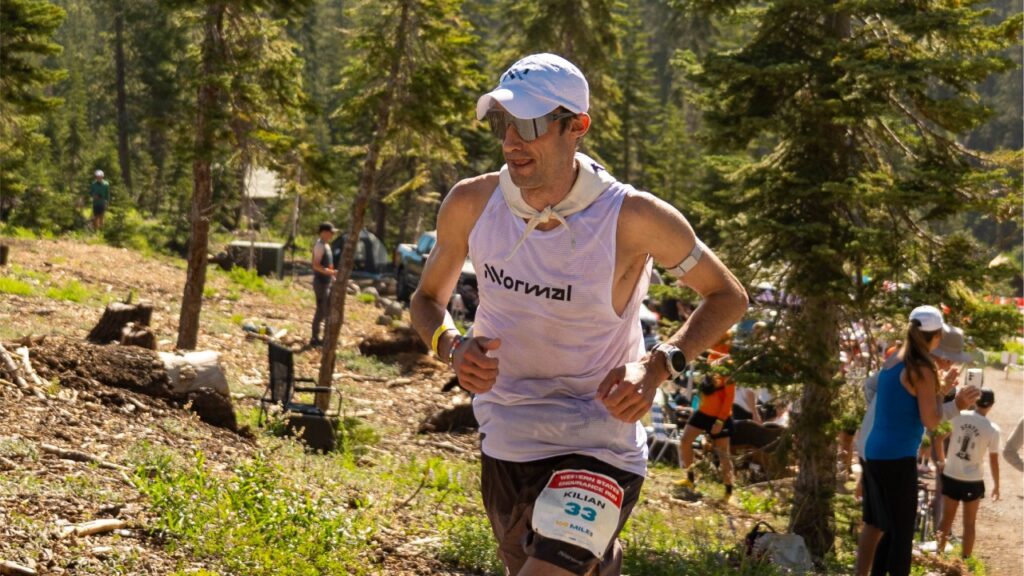Recent insights into Kilian Jornet’s performance at the Western States 100 reveal critical strategies that experienced ultrarunners planning to tackle challenging mountain races may want to consider. Jornet, a highly regarded figure in ultrarunning, returned to this iconic race for the first time since his triumphant run in 2011. At the age of 37, he demonstrated not only remarkable physical endurance but also strategic pacing that resonates with seasoned trail and ultrarunners.
Clocking in a time 80 minutes faster than his previous run, Jornet finished third, navigating the course’s heat and terrain with tactical precision. The race, characterized by fluctuating temperatures and elevation changes, presented a unique challenge. Initially, he maintained a conservative pace while numerous runners surged ahead at an unsustainable speed. This choice to bide his time until the latter stages of the race aligns with the nuanced approach needed for endurance events, especially under extreme conditions.
Jornet’s preparation included tailored heat training, which he noted appeared effective in helping him manage the searing conditions on race day. His post-race commentary highlighted the importance of specific training methods for distinct race environments, which can offer ultrarunners valuable lessons about employing imagination in training for increased competitiveness. His deliberate strategy entailed conserving energy during the initial 30 miles, allowing him to execute a stronger finish by selectively increasing effort on the climbs, one of Jornet’s strengths.
In this race, as he crossed the “Last Chance” aid station in eighth place, Jornet activated his pre-planned surge during the challenging four-and-a-half-mile segment. His choice to hike with purpose on steep sections while maintaining a conservative effort on the descents showcased an effective pacing strategy. This approach minimized muscle strain, ensuring optimal performance for the more demanding climbs ahead. Critical to success in races like Western States is the capacity to navigate terrain variability; here, training adapted for uphill running paid dividends for Jornet as he climbed from eighth to third, capitalizing on his strengths while others faltered.
Data supporting his performance indicated that he predominantly operated within heart rate zones 2 and 3, placing himself strategically for higher intensity exertion on crucial uphill segments. As he progressed toward the final miles, despite being over eight minutes behind second place after 90 miles, Jornet’s pacing allowed him to close the gap considerably, bringing it to less than two minutes by the race’s end. This aspect of race strategy emphasizes the significance of not just endurance, but also the importance of pacing and energy expenditure throughout the ultramarathon context.
In discussions surrounding the competitive landscape, it’s worth noting that the course record set by Jim Walmsley still stands, as specified predictions around race day dynamics bore out, illustrating the reality that ultra-running demands both top conditioning and the ability to execute purposeful race strategies. For engaged ultrarunners, understanding these elements can facilitate improved outcomes in their race preparations.
Furthermore, as discussions around future races circulate, and given the tendency for the field to become progressively more competitive, the takeaways from Jornet’s performance resonate beyond just this event. Acclimatization to environmental factors like heat, sophisticated pacing methods, and energy management should be prioritized along with training programs that cater to individual strengths and weaknesses.
In the larger context of mountain ultras, the strategies and insights gleaned from Jornet’s race at Western States provide a tangible reference point. Experienced ultrarunners should focus on tailoring their training regimens to encompass specific race conditions, ensuring that their pacing strategies are adaptable and reflective of both their physiological responses and terrain demands. Employing such a proactive approach will not only prepare runners for the varied challenges of mountain racing but could ultimately deliver performance enhancements in competitive environments.
In summary, the key takeaway for ultrarunners is to adapt race strategies that prioritize pacing and energy conservation, particularly early in the race. By learning to effectively engage strengths on specific terrains while managing overall exertion throughout an event, runners can achieve a better balance of performance that maximizes their potential on race day.
